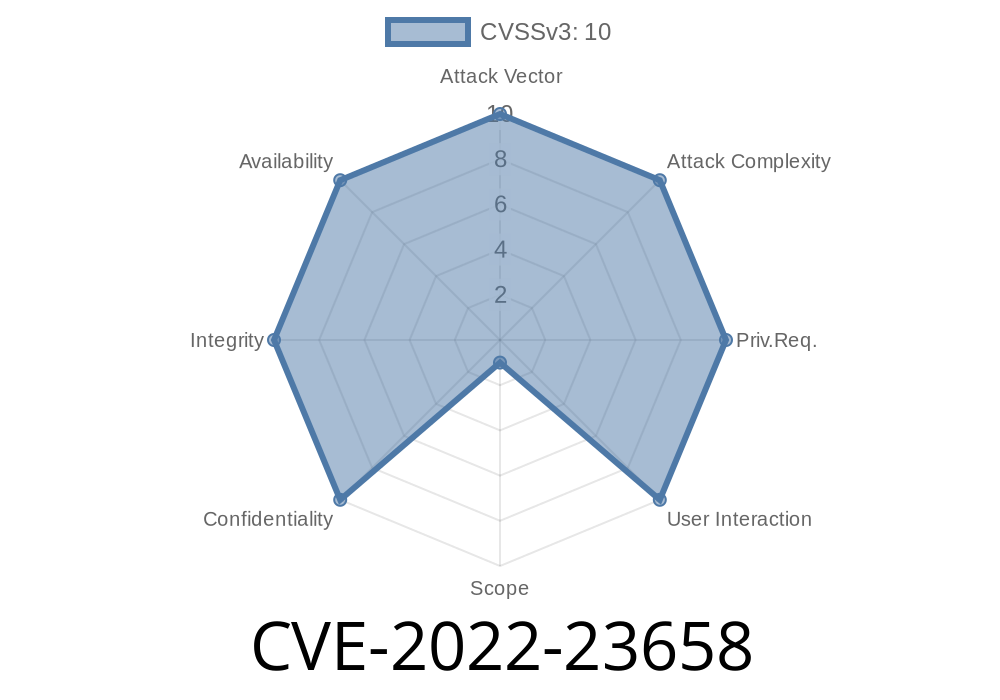A remote authentication bypass vulnerability, known as CVE-2022-23658, has been discovered in various versions of the Aruba ClearPass Policy Manager. This vulnerability puts at risk any organization using the affected versions and could lead to unauthorized access to sensitive systems and data.
Aruba has already issued updates to address this security vulnerability, but it's essential for system administrators and network teams to understand the details of this vulnerability, and take steps to ensure their systems are secured.
In this deep-dive article, we'll explore the implications of CVE-2022-23658, examine the affected versions, and discuss how to mitigate this vulnerability. Let's start by understanding what Aruba ClearPass Policy Manager is and how this vulnerability can be exploited.
Aruba ClearPass Policy Manager Overview
Aruba ClearPass Policy Manager is a popular access control and policy enforcement solution that provides businesses with secure and consistent access management across their networks. It helps organizations implement and enforce network security policies while ensuring that only authorized users can access protected resources.
CVE-2022-23658: Vulnerability Details and Exploit
CVE-2022-23658 is a remote authentication bypass vulnerability in Aruba ClearPass Policy Manager. This means that an attacker can exploit this vulnerability to bypass the authentication process, gaining unauthorized access to protected resources on the network.
The vulnerability exists due to a flaw in the ClearPass Policy Manager's authentication mechanism. A remote attacker can make use of this vulnerability by sending a specially crafted network request with specific JSON code snippet:
{
"username": "attacker",
"password": "any_value",
"authentication_bypass": "true"
}
Once the attacker sends this request, the authentication process is bypassed, and the attacker gains access to the network resources.
For a more in-depth technical analysis, you can refer to the official CVE record:
CVE-2022-23658
Aruba's Security Advisory
Aruba has acknowledged the vulnerability and published a security advisory detailing the affected versions and available updates. You can find the advisory at Aruba Security Advisory ARUBA-SA-20220222-PLVL08.
Mitigation and Recommendations
To mitigate the CVE-2022-23658 vulnerability, organizations using Aruba ClearPass Policy Manager should immediately:
1. Update the ClearPass Policy Manager to the latest version (according to the Aruba security advisory).
For version 6.10.x: Update to ClearPass Policy Manager 6.10.5 or later.
For version 6.9.x: Update to ClearPass Policy Manager 6.9.10 or later.
For version 6.8.x: Update to ClearPass Policy Manager 6.8.9-HF3 or later.
2. Organizations unable to update immediately should ensure they have implemented proper network segmentation and access control to minimize the risk of unauthorized access to sensitive resources.
3. Monitor and review network logs for any anomalous activities or attempts at exploiting the vulnerability.
4. Make sure that your organization is running the latest security updates and patches to minimize the risk of potential attacks.
Conclusion
The discovery of CVE-2022-23658 highlights the importance of staying updated on security vulnerabilities and staying proactive about securing your organization's network. By understanding the details of this vulnerability, you are better equipped to protect your ClearPass Policy Manager from unauthorized access.
Aruba's prompt release of updates to address this vulnerability is commendable, and we hope this article serves as a useful resource for organizations using Aruba ClearPass Policy Manager to maintain their systems' security.
Timeline
Published on: 05/16/2022 20:15:00 UTC
Last modified on: 05/25/2022 16:05:00 UTC
